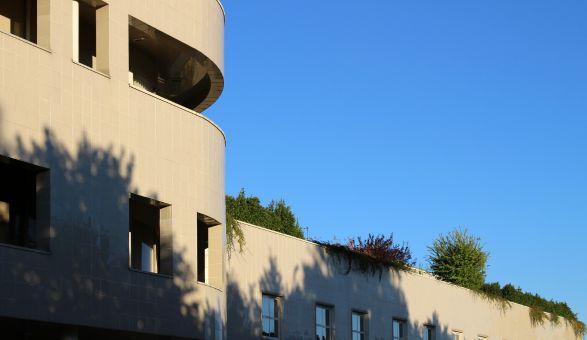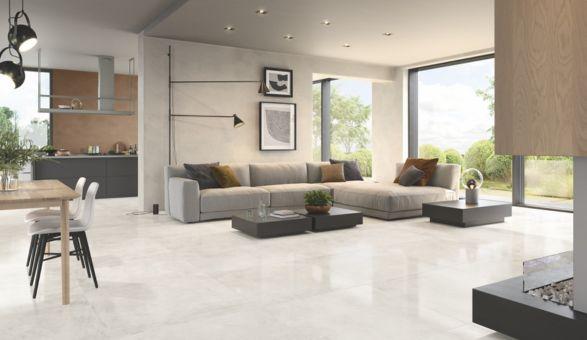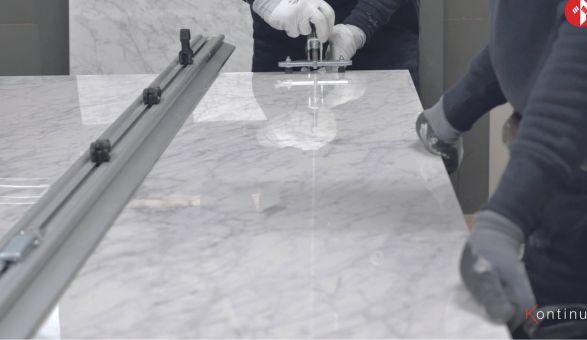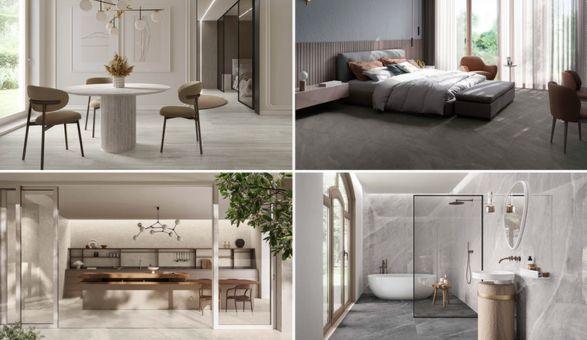Percorsi in ceramica 26
For Renzo Piano “to design is to explore, it is what one could define the adventure of thought”. In the forty-year experience of the Genoese master, has always had to come to terms with the appropriateness of the employed material. Among these, ceramic and earthenware have represented a very original evolutionary process and proved ground for ceaseless experimentation, so much that both stretched beyond the traditional boundary between form and facing, searching the depths of often unexplored opportunities for development and integration. As an example from the recent past, it is enough to think of the most advanced envelope systems that integrate ceramic elements and were designed for several projects, including the ex-area Falk in Sesto San Giovanni (not completed), as well as the famous New York Times skyscraper in New York and the equally reknow Central St. Giles complex in London. Along this line Casalgrande Padana has started a close collaboration with the Renzo Piano Building Workshop for the development of several projects, including Auditorium Niccolò Paganini in Parma, Villa Nave in Genova Vesima (offices premises of the RPBW studio and Renzo Piano Foundation, a massive infrastructural project at the service of one of Le Corbusier's best masterpieces, the Ronchamp Chapel and, last but not least, the new Pirelli Tyre industrial complex in Settimo Torinese. The story of some of the above architectural experiences is the backbone of this issue of “Percorsi in Ceramica”, bearing testimony to the indissoluble link between production and design, which has always been at the core of Casalgrande Padana's development strategy. The second part of the magazine is focused on production, with two new features launched at the last edition of Cersaie: the development and extension of the Granitogres Architetture and Bios Self Cleaning Ceramics®, the new self-cleaning stoneware tile series created in bundle with Toto, a Japanese company wich is the undisputed leader in photo-catalytic coating with its Hydrotect® brand. These two new solutions offer new perspectives to architecture and design, which stem from the relentless commitment to research and innovation Casalgrande Padana has always stood out for.
For Renzo Piano “to design is to explore, it is what one could define the adventure of thought”. In the forty-year experience of the Genoese master, has always had to come to terms with the appropriateness of the employed material. Among these, ceramic and earthenware have represented a very original evolutionary process and proved ground for ceaseless experimentation, so much that both stretched beyond the traditional boundary between form and facing, searching the depths of often unexplored opportunities for development and integration. As an example from the recent past, it is enough to think of the most advanced envelope systems that integrate ceramic elements and were designed for several projects, including the ex-area Falk in Sesto San Giovanni (not completed), as well as the famous New York Times skyscraper in New York and the equally reknow Central St. Giles complex in London. Along this line Casalgrande Padana has started a close collaboration with the Renzo Piano Building Workshop for the development of several projects, including Auditorium Niccolò Paganini in Parma, Villa Nave in Genova Vesima (offices premises of the RPBW studio and Renzo Piano Foundation, a massive infrastructural project at the service of one of Le Corbusier's best masterpieces, the Ronchamp Chapel and, last but not least, the new Pirelli Tyre industrial complex in Settimo Torinese. The story of some of the above architectural experiences is the backbone of this issue of “Percorsi in Ceramica”, bearing testimony to the indissoluble link between production and design, which has always been at the core of Casalgrande Padana's development strategy. The second part of the magazine is focused on production, with two new features launched at the last edition of Cersaie: the development and extension of the Granitogres Architetture and Bios Self Cleaning Ceramics®, the new self-cleaning stoneware tile series created in bundle with Toto, a Japanese company wich is the undisputed leader in photo-catalytic coating with its Hydrotect® brand. These two new solutions offer new perspectives to architecture and design, which stem from the relentless commitment to research and innovation Casalgrande Padana has always stood out for.






